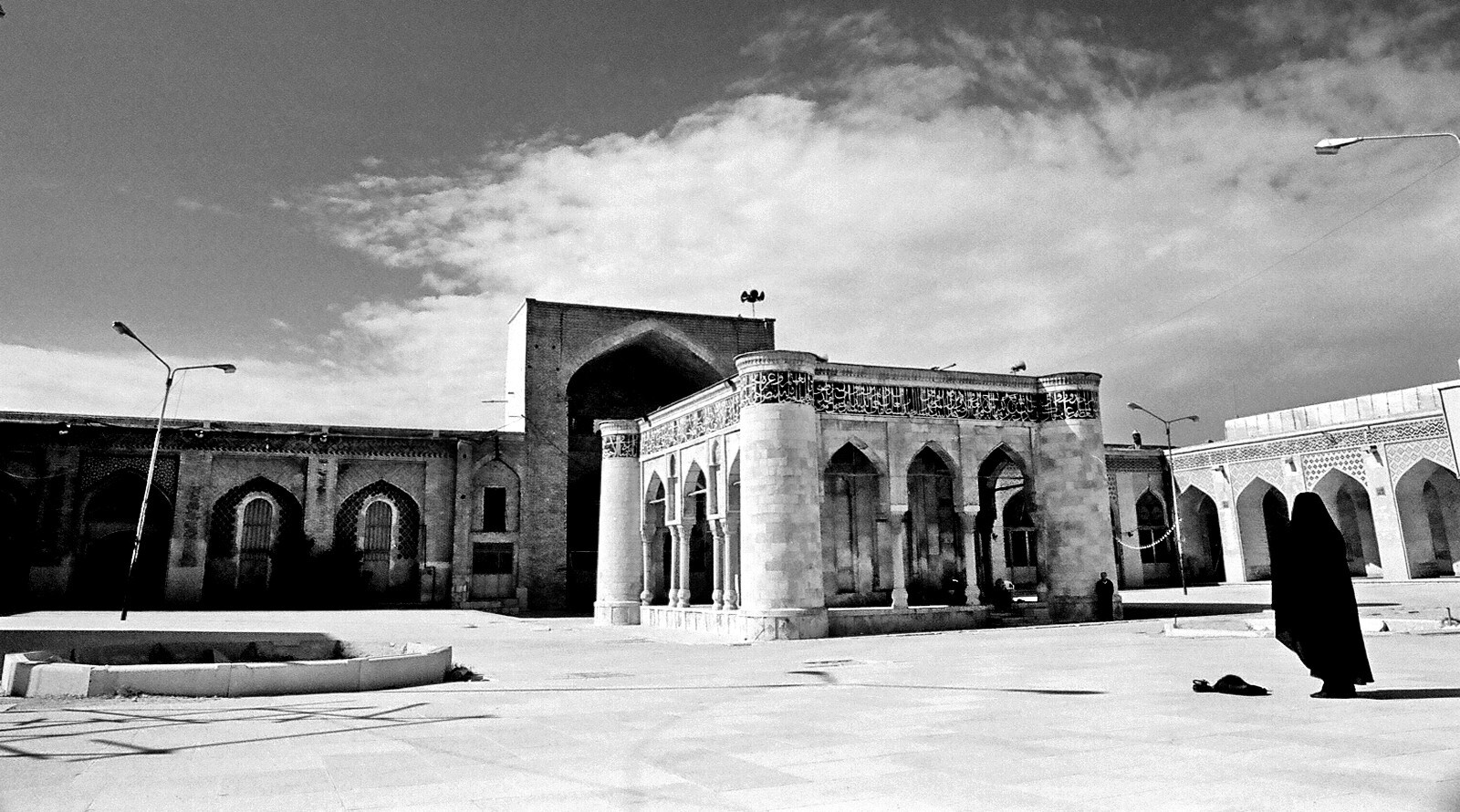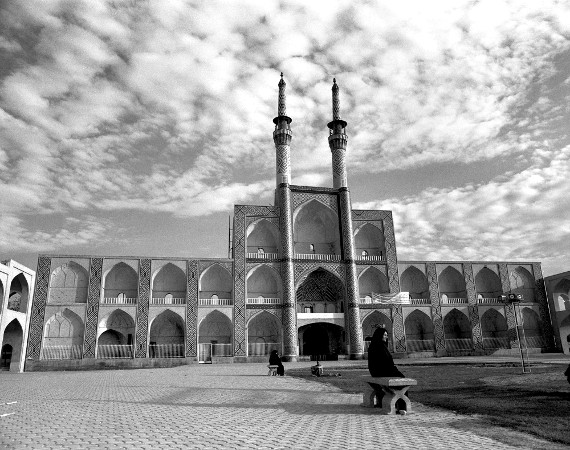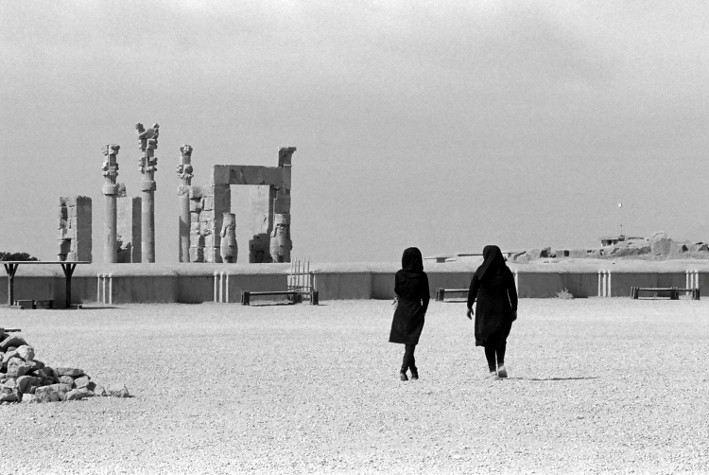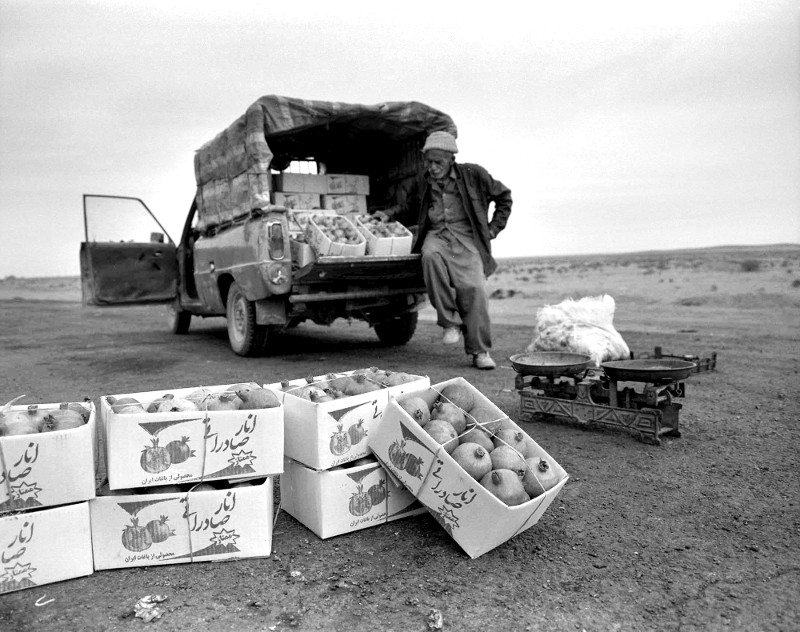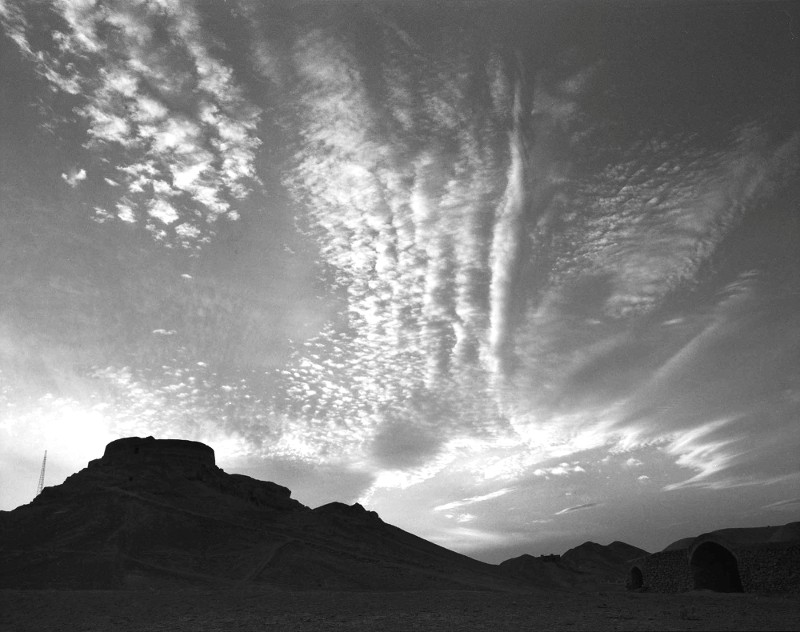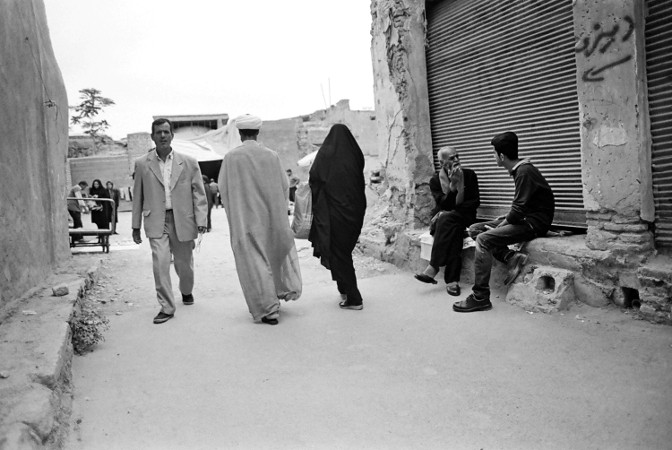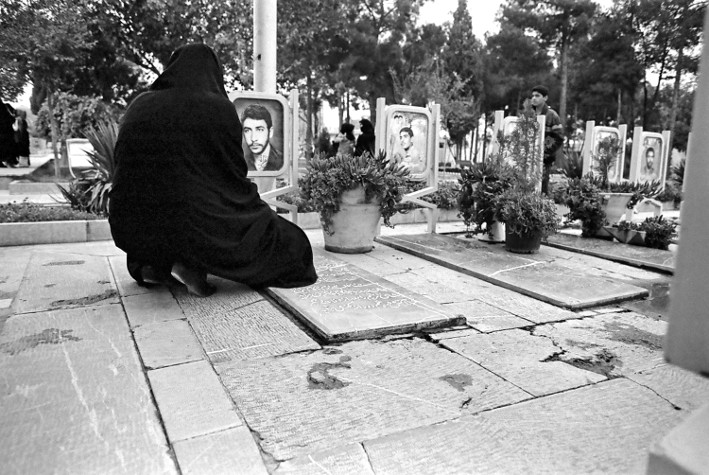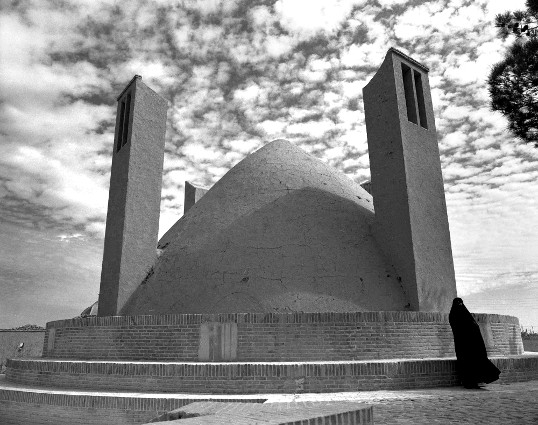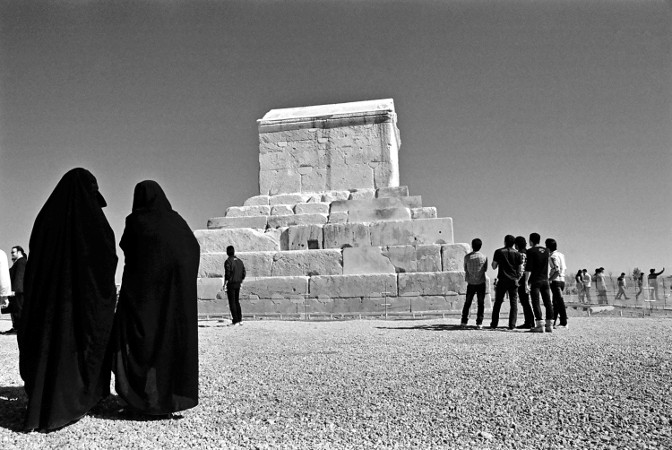There is much to see in Iran, half the land area of India but with only 6% of our population. The 10 days I spent there in October 2013 took me by road from gateway Tehran through the three provinces of Yazd, Fars (Shiraz) and Isfahan (central, southern Iran), some smaller towns, villages and historical sites.
Hindustan and Persia
It was eye opening to experience and connect how much the past 500 years of Hindustan was framed by Persians and Hindustani’s moving back and forth between our porous borders – their refined culture, music, language, architecture and the Twelver Shia version of Islam forever leaving its imprint on the welcoming mosaic of our civilization.
Shia Islam as it developed under the influence of Persian émigrés in Hindustan during the Mughal period (16th Century CE and after) and the concomitant Safavid period in Persia bound our two civilizations in many ways the most visible of which was Farsi, but this connection was only the most contemporary. Our first connections go back to 8000 BCE when Aryan speaking tribes moving from the Caspian Sea area migrated into what is today Iran and then over time beyond the Hindu Kush (Pakistan and India) over thousands of years; our connections deepened in and after 1000 BCE when Zarathustra preached a religion and developed a culture in Persia that shared much with the Vedic faith in India; and produced the great Cyrus and Darius.
There is thus much that is shared between Iran and India before the advent of Islam that can remind us of our interconnectedness and form ways to bring us together, remind us of our common Insaniyat. The clerics of Shia Islam, the state religion of Iran that 98% of the populace now follows, will not allow such sharing into the remote past; and nationalism has created the nations of Afghanistan and Pakistan in between our civilizations with a hard border - Humayun could not have hoped to find asylum in the Iran of today; to start with he would not have got a visa with the requirements of AIDS and Hepatitis testing. He would have regally refused to be tested – I had no such option. Strangely, Iran is the only nation in my 30 years of international travel that demands this. You now know how deeply I wanted to visit the ancient Persia of the Aryan speakers, of Zharthosth, and Shah Ismail.
It was inspiring to visit Taakht-e-Jamshid (Persepolis) and view the magnificent, carved 16 meter high stone pillars by workmen whose subsequent generations may have crafted the equally unique Asokan pillars in India. The Iranians sense of identity and national pride seemed to me to be very viscerally connected to ancient Persia and its kings.
It was sad to see the large, deserted and brooding Dakhme (Towers of Silence) of the Zoroastrians – holy places where the last rites of the dead were held, and which perhaps aptly are the most visible traces of a disappeared civilization that was the essence of Persia till the advent of Islam in the 7th Century CE and beyond. I could finally understand the sense of loss of the Parsi’s of India, fleeing from their ancient land but holding on to their religion and way of life. Today, all you see at the Dakhme (in Yazd, Isfahan, and the others that dot the Iranian countryside) is the odd group of foreign tourists, and the local bikers who rev themselves up and down the steep slopes in desultory desecration of the silence.
Diary
Everything in Iran seemed fascinating - the sophisticated architecture and handicrafts that hold many echoes in India; the realization that hundreds of words from Farsi are in everyday use in the street Hindustani spoken today in North India; the amazing monuments (mostly well maintained, in a supposedly bankrupt nation – ASI, please note); 6 laned motor highways that are way ahead of what we see in India; the absence of desperate poverty and urban slums; the hospitality and kindness of the villager, the pride of the Iranian in his past; the refinement of the Persian culture; the overwhelming presence of Shia Islam sponsored by a State controlled by clerics; the depth of anti Americanism as well of anti cleric feeling, though well camouflaged, and the aromatic tasty warm fresh naan.
Needless to say, being a vegetarian created a layer of complexity that did not match what I have faced in Japan or China but was nonetheless a significant restriction to enjoying the food I saw on offer. The Naan was thus a staple for me, warm and fresh out of the oven at roadside naanvayee’s; and the sweets were quite Indian in taste and preparation – Sohan Halva is the exact same, and the long and ever present queue at the popular sweet houses in Yazd reminiscent of India.
The fruit gardens in city and village homes are outstanding, reflecting an aesthetic entirely missing in most parts of India. Fruits and nuts grow everywhere despite the arid nature of the area I travelled in - orchards of piste (pistachio), badam (almonds), Anaar, Gerdu (walnut).
Hotel Abbasi in Isfahan is a must stay, the garden comprising generously fruiting trees within a traditional Persian garden. However, hotels and tourism infrastructure in general are way behind India and the rest of Asia; which is not necessarily a bad thing. The cities are clean, with no garbage on the streets and a working municipal workforce, and no one defecating on the streets or the villages (simple things keep an Indian amazed).
Ever used to the inequities in Indian society where there are clear divisions of caste and class, it was a surprise to have meals along with the driver Ahmad and my wonderful guide Parnian – and living in the same hotel, in the same kind of rooms. I was paying for this obviously, but the point was the egalitarian nature of the society which makes this kind of treatment a given.
I visited caravansarais, mud citadels, masjids and shrines too many to name; heard the sonorous and urging call of the muezzin through the day; walked through the kuche and mohalle of many old cities; visited the bazaars early morning before they opened and later in the day when they were buzzing with commerce and people; saw first hand the preparations for Muharram in village Hosseniye and public places; shopped for carpets and hand crafted gifts in Isfahan; and the Dakhme (Towers of Silence) which are aptly the final resting places of the Zoroastrian way of life.
Shah-e-Cheragh, Shiraz
The 9th Century ACE Maakbare Haram of Imamzade Sayyid Amir Ahmad is an architectural masterpiece, and a place of much veneration in a country starved of historical places connected to Hazrat Ali and his descendants. It reminded me of the thousands of such Mazhars and Mandirs in my own country, a place of solace to those struggling with life & living. The call of the muezzin to prayer, and the little ceremony in Persian with the young muezzin leading a group of youth around in front of the Maakbare Haram was musically spell-bounding and simply the best I have heard yet.
Zurkhaneh, Yazd
I spent a fantastic evening in a Zurkhaneh – an Iranian gymnasium – an experience of a lifetime. A one hour exercise routine in a wrestling ring arena, by 12 men aged 16 to 60, with 5-6 of them amazingly fit. The exercise routine was set to rousing music played on the Zarb (tunbak) and sung (in the tone of Moharram Nohe), about Hazrat Ali - his ideal character, kindness to the poor, his generosity to those who don't have enough) by one very talented Morshed singing and drumming sitting in the Joygah. Music was also from Firdowsi’s Shahnameh - exhorting youth to be respectful to elders, not to be arrogant as you will not always be young and powerful and will be old and weak some day; only thing will be to be respectful and polite - Aadab - to elders. The music was interspersed by a vigorous Salabat (Allah o Mussalleh Allah) that everyone in the audience too recited. The singer (Morshed) and the (aspiring Pehelvan) participants and audience were connected ever more as the evening went on, and I mostly forgot the increasingly overpowering smell of unwashed socks and sweat in the high energy gym.
Gulestan-e-Shohadah, Isfahan
It was sobering to reach Isfahan and visit the Gulestan-e-Shohadah (Garden of Martyrs) for the 8,000 young Revolutionary Guards killed in the 8 year long Iran-Iraq war that looks so fruitless today. Hundreds of thousands were killed, a lost generation divided by the ambition of the rulers of the two nations bound together by religion (Iran and Iraq are the two major Shia majority nations in the world, the third being small Bahrain). It was a Friday evening, and families were here there commentating their departed, in a subdued and accepting manner 26 years since the fact. Children ran around parents, siblings, other relatives of the Shohadah, creating an atmosphere where sorrow whispered in the background, overcome by time, the exuberance of youth and the ageless need to move on.
Ingenious water management
I explored the traditional water reservoir or ab anbar, the terminal end of the extensive traditional water supply systems (qanat) that made urban settlements possible in the Kavir desert region of Central Iran where I travelled. This underground water wells and canal system is ingenious, though mostly now being abandoned. “Snow fed streams were tapped at the foothills of surrounding mountains and channeled through sloping subterranean canal systems (the qanats), often over great distances to discharge into underground distances within the city “ as the Yazd guide book says.
Change
I felt the deep desire in the educated for change of the status quo, for re-connecting with the rest of the world. But that is easier desired and whispered about than done, and it was obvious as I travelled that the confrontation of the Iranian nation state with the West will continue for some time. Shia Islamic Iran poses a challenge to the hegemony of the American alliance, and this will not change as the clerics run the country and hold military and constitutional control.
Society is run the uniquely Iranian Islamic way as mandated by the clerical State – it is clearly conservative : women need to cover their head at all times, and many more traditional women are in chador or burqa, but to balance all this women are active and present in all walks of life. I got the sense that much is controlled on what one can do and not do both as an Iranian and a tourist from overseas, despite being immersed 12 hours a day in photography where fortunately I felt no real restrictions other than those within seriously visited mosques. It was a surprisingly good feeling that, on balance, India is ahead in terms of the freedom of the individual to speak, read, write what (and associate with whom) you want.
I witnessed the paranoia of the state at the even slight potential of disruption when people gather in numbers not sponsored by the state –at Pasargade, the tomb and vast palace of Koroush (Cyrus) on his birth anniversary which is a national holiday. Koroush is yet a symbol of contemporary Persian pride and I noticed athletic and muscle bound young men wearing the Zoroastrian Fravahar; but there was an overwhelming presence of uniformed and plainclothes police to keep the silence.
Then, there were the Marg Bar Amrika (Down With America) rallies across the country on the day of the anniversary of the occupation of the US Embassy on 4 November 1979. I happened to participate in one such rally in the small village of Pir Bakran (where I almost got arrested as a suspicious photographer, potential American spy). It was fun to be in the rare nation that openly showers curses on all powerful America – specially coming from India where civil society, business and the polity has rolled over and said ‘uncle’ many times over to the Great Bully.
The hospitality of Jahangir at Pourbaferan village (two hours from Yazd, on route to Isfahan) is etched in my mind as representative of the rural Iranian. He took us around the village Hosseniye, the masjid, the vegetable fields watered by the qanat, showed us around the qanat system, had us meet his family, offered us a meal, guided us through the local holy place where Imam Reza is said to have rested on route Mashhad. He was gentle and soft spoken, friendly, warm, kind and welcoming. Like, I imagine, most of the Iranian people would be with a brother from Hindustan.
Some Persian words common to Hindustani, as noted in this visit. Durust, Halva, Samosa, Paneer, Tanoor (tandoor), Naan, Faluda, Awwal, Naksha, Makbara, Shaheed, Sabzi (herbs) - Sabzi Jot (vegetables), Dastaan, Khwab, Charpoye, Ketri (ketli), Sade (plain), Sud (profit), Ezhafe (increase), Limu (nimbu), Nazdeek, Dobare, Darwaze, Mahalle, Kuche, Dukan, Rah, Khorakh (food), Sarai, Aabad (populated), Zindagi, Toot, Shahtoot, Jau, Gau, Kishmish, Badaam, Pista, Karkhane, Muft, Nazdeek, Ishq, Rusvayee, Judai, Hoshiar, Kabootar, Taq, Mehraab, Dur.
